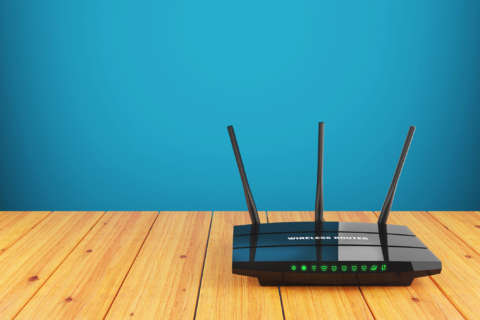Q: Is it safer to do my online banking on my smartphone or computer?
Compromised banking credentials are a hot property on the “dark web,” which serves as a marketplace for cyber-thieves. Finding new ways to trick users into giving up those credentials is ongoing.
Security is never about a single thing, so when it comes to the safety of your online banking transactions, it’s important to consider the device you’re using, how you’re connecting to the bank and whether you’re connecting to a large bank or a small regional bank.
Understanding the risks
If you’re using your own connection at home, the risks are quite different from when you are using public Wi-Fi.
If you’re using a shared computer at home, especially with kids, your risks are quite different than using a smartphone that only you use.
If you’re using an app from a small regional bank, they may lack the resources or expertise that the large banks have when it comes to the continuous security battle.
Security through obscurity
In general, you can assume that the more popular a device or operating system is, the more malware that has been written to compromise users as it is simply a numbers game for the bad guys.
Windows is the most popular OS in the world and is also the most targeted. The Android smartphone platform is not only the most popular mobile OS globally, it also allows users more flexibility, which can open up security holes.
A computer used by the entire family has a much higher chance of contracting some form of malware from any one of its users than one that is only used by a single person.
Since nothing is 100 percent secure, it’s best to evaluate the risks with each of your options and choose the one you feel has the fewest exposure points.
Web browser vs. apps
Security experts will always find an opening to expose just about anything we’re using, but in my experience, the average user is more likely to be compromised through their computer simply because there are exponentially more threats targeting computers.
Most smartphone-based online banking compromises generally require that the user install a malicious banking app from a third-party. Using a web browser on your smartphone to access your bank has more potential exposure points than using the actual banking app as well.
For most people, using a banking app on their smarthphone via a cellular connection reduces the most exposure points.
Additional security tips
Whenever you’re out in public, it’s always best to avoid shared connections such as Wi-Fi and stick to only using your carrier’s cellular connection, whether you are using a computer or a smartphone.
Only download banking apps from either Apple’s App Store or Google Play, and be sure to activate any multi-factor authentication options your bank offers, including things like fingerprint recognition. Always avoid having your device save your password in case it ends up being lost or stolen.
If you’re in a household that shares a computer, consider using an alternative browser such as Opera for all your online banking and for nothing else.
It’s also important to keep your devices updated so that the security that’s built into your bank apps and web portals isn’t circumvented by security holes in your operating system.
Ken Colburn is founder and CEO of Data Doctors Computer Services. Ask any tech question on Facebook or Twitter.







